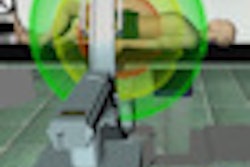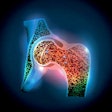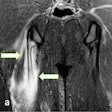The need to interpret a polytrauma CT scan rapidly, accurately, and thoroughly places a lot of pressure on an experienced radiologist. A human life may be at stake. For a radiology resident, the pressure's even greater, but a free web-based tutorial described online in the European Journal of Radiology may make the process easier.
Radiologists at the Hannover Medical School (Medizinische Hochschule Hannover) in Germany have developed and published an interactive polytrauma tutorial designed to reduce the complexity of interpreting and reporting findings of a polytrauma CT scan. This training tool provides a collection of cases that show in a step-by-step manner how an experienced radiologist interprets them, and enables a user to interpret the cases. At each step of self-interpretation, interactive guidance is available (EJR, 7 August 2012, Epub ahead of print).
Similar to simulation training, this tool endeavors to replicate real-life reading situations. Formal instruction includes textbook content, movies of sectional CT scans with standardized reconstruction planes, and short checklists developed by a radiology consultant. The tutor movies show how an experienced radiologist interprets a case and incorporates audio commentary explaining findings as the pathology is pointed out. This combines formal training with a guided case analysis. With each case, complementary information has been added in the form of short texts and key questions for fast analysis of injuries.
The German language tutorial consists of four chapters. These include an introduction to polytrauma diagnostics and an explanation of the technology and workflow of polytrauma CT.
The third chapter includes theoretical background information of typical polytrauma pathologies and their diagnostic findings in CT, as well as recommendations for standard reading settings and a selection of CT reconstruction planes. Within this chapter, the whole-body CT scan is divided into anatomic sections, each of which includes tutor and case analysis workstation movies.
This is augmented by a fourth chapter of cases, which are similarly structured. In addition to the tutor movie, cases have also been made available as podcasts that can be downloaded and viewed on mobile devices such as tablets.
Lead author Dr. Celia Schlorhaufer, from the department of diagnostic and interventional radiology, and colleagues used widely available software to develop the tutorial. These included Apple QuickTime, the Camtasia screen recording program, and the Ilias Web-based open-source learning program to create an interactive case collection. The program was "field tested" by five radiology residents, and some modifications were made based on their feedback.
The tutorial may be accessed by clicking here. It is published in German but includes a demonstration tutorial in English.
















